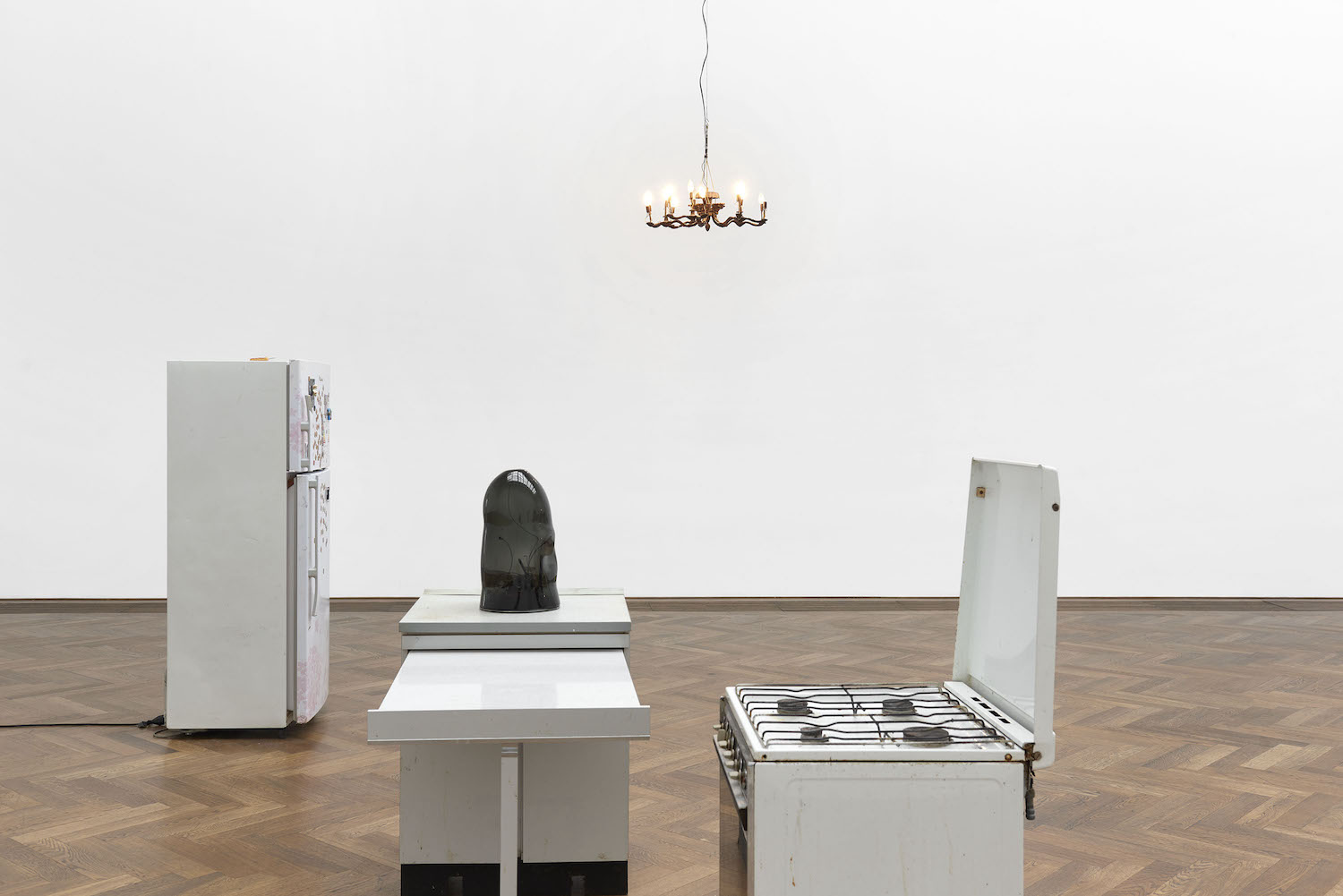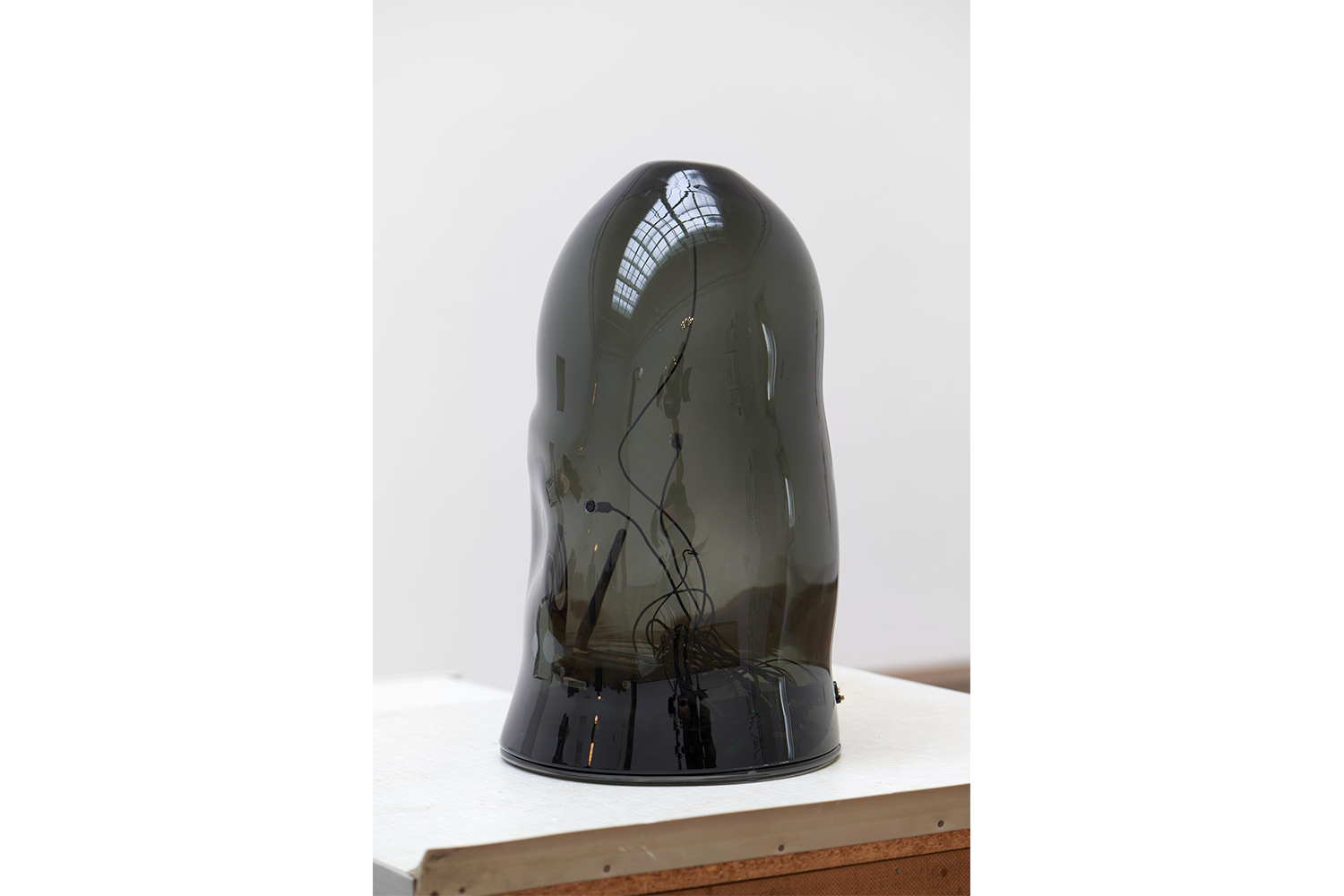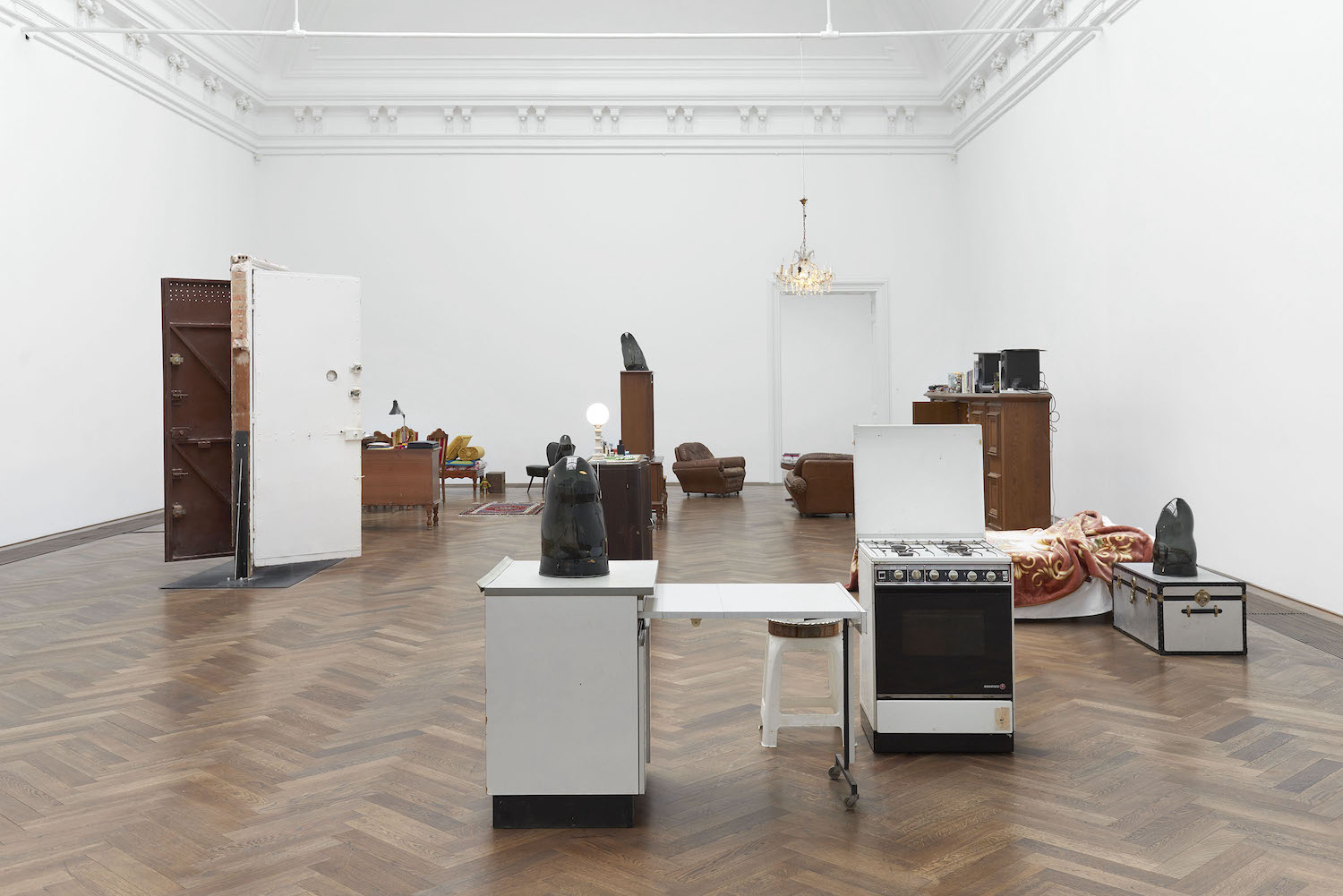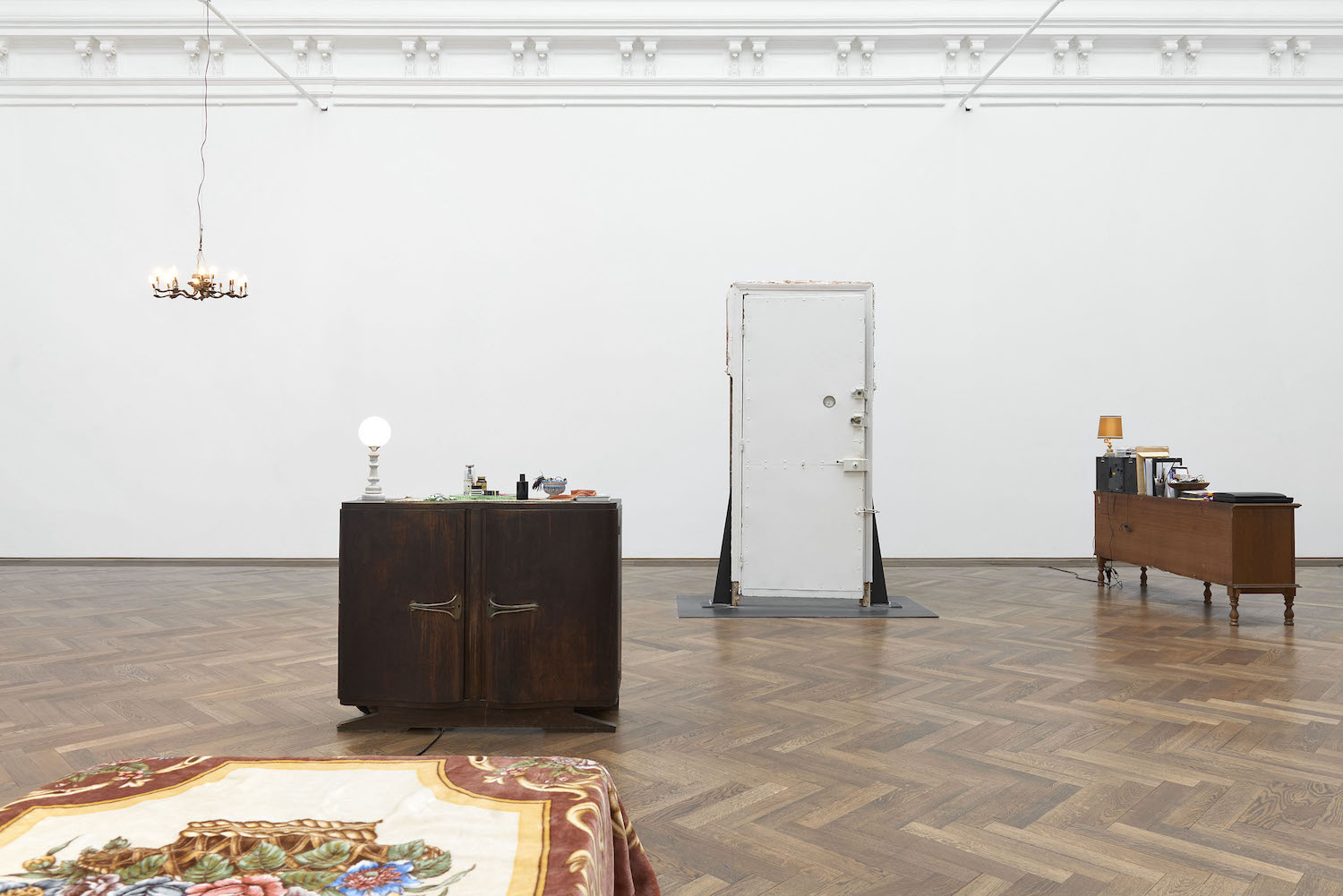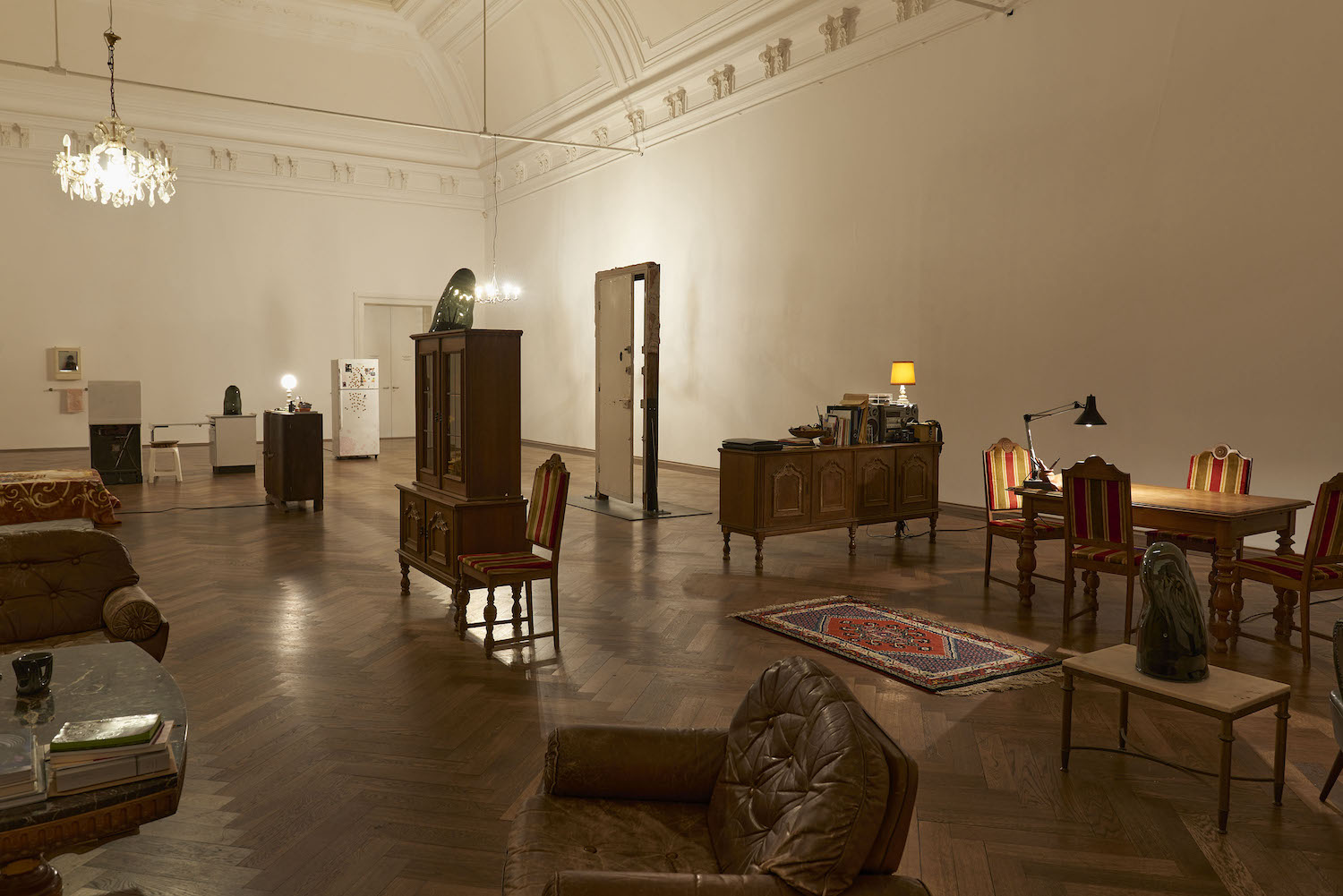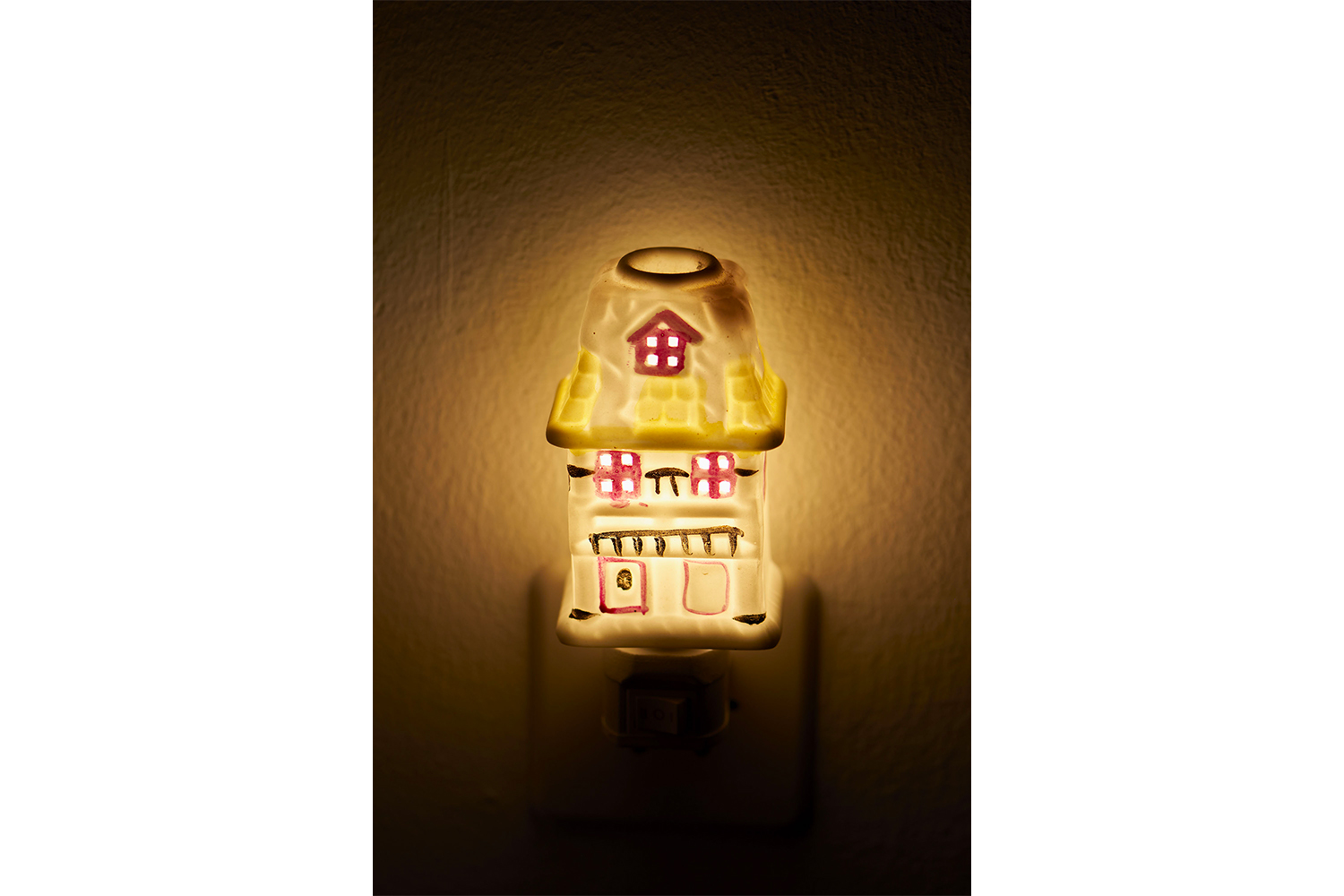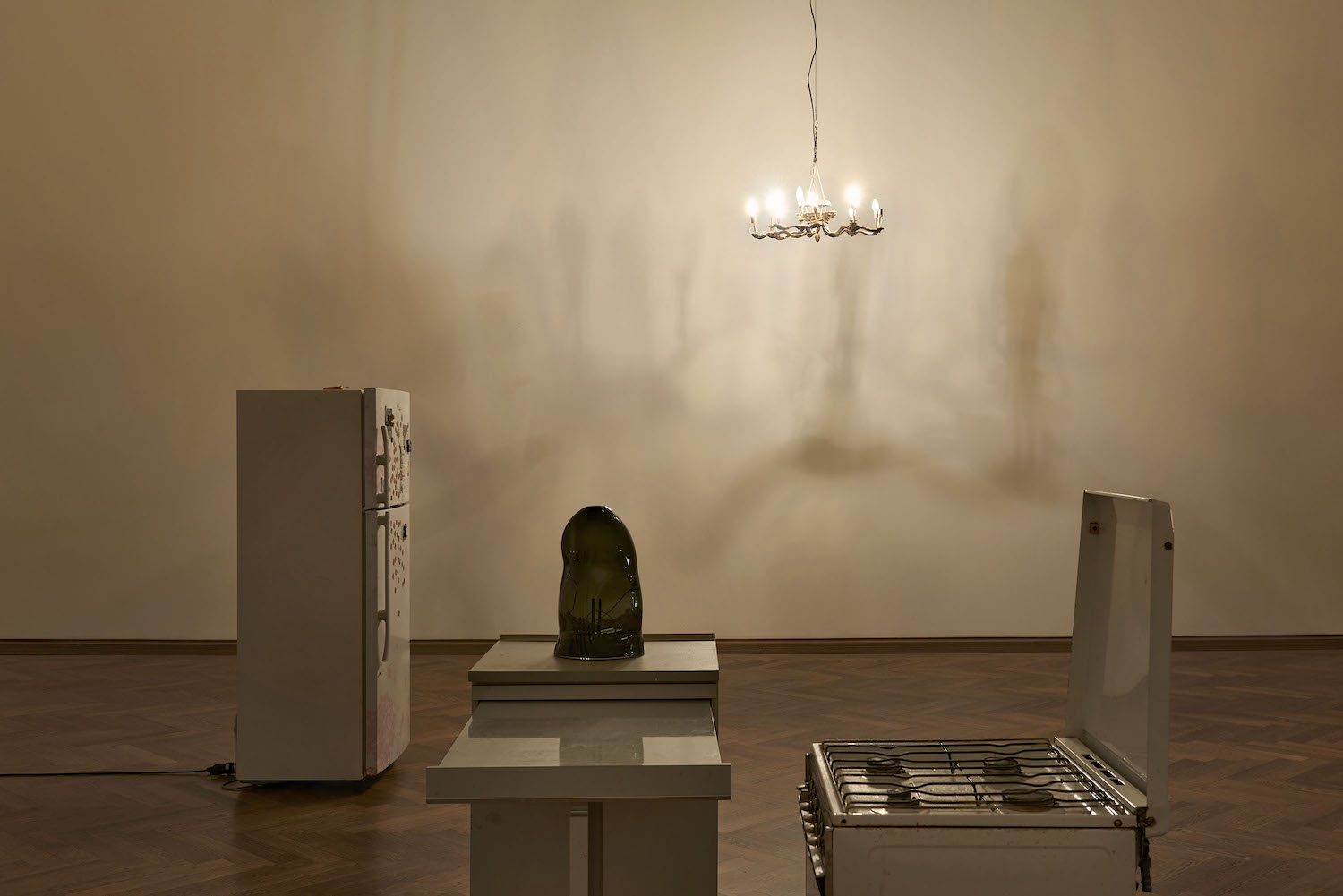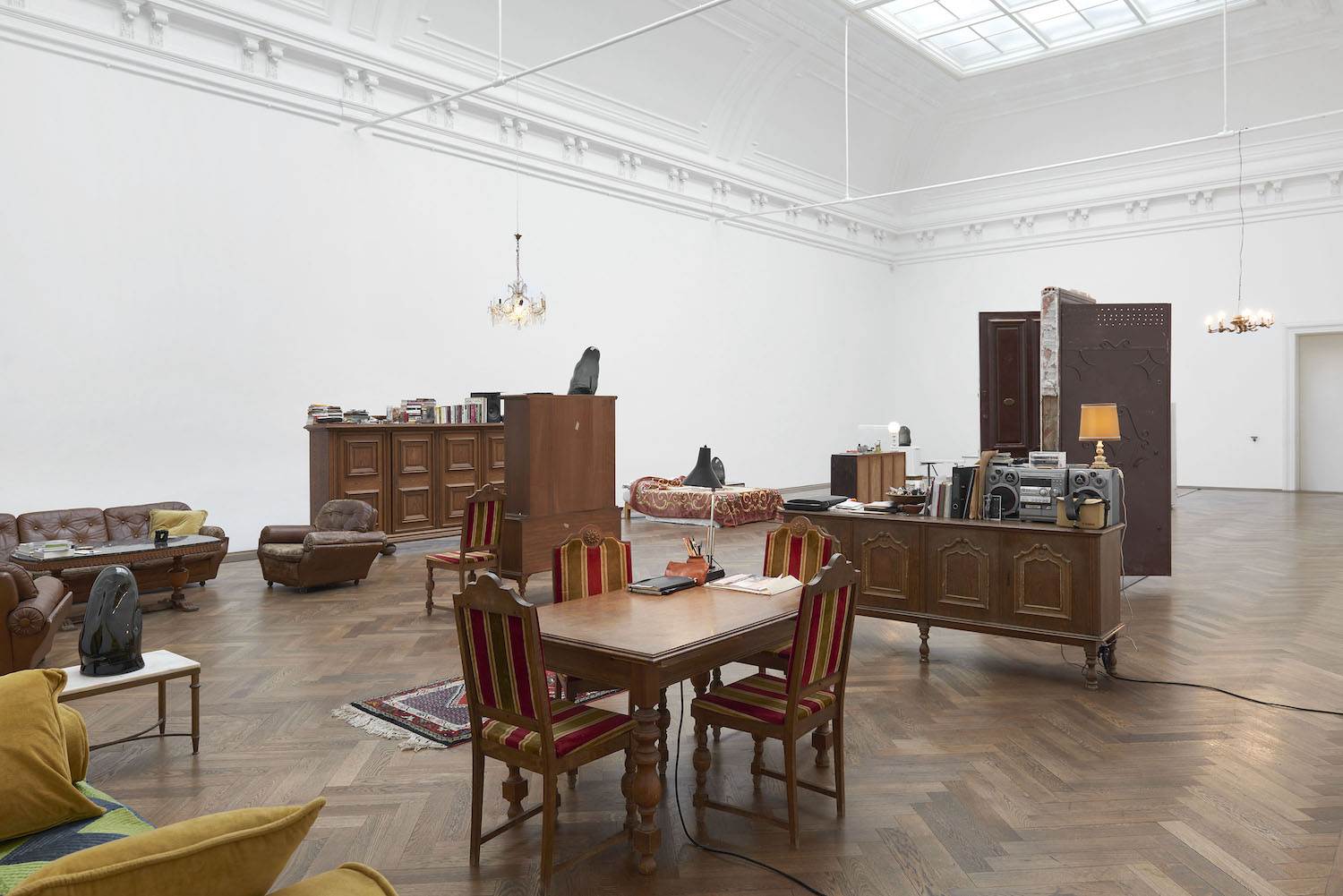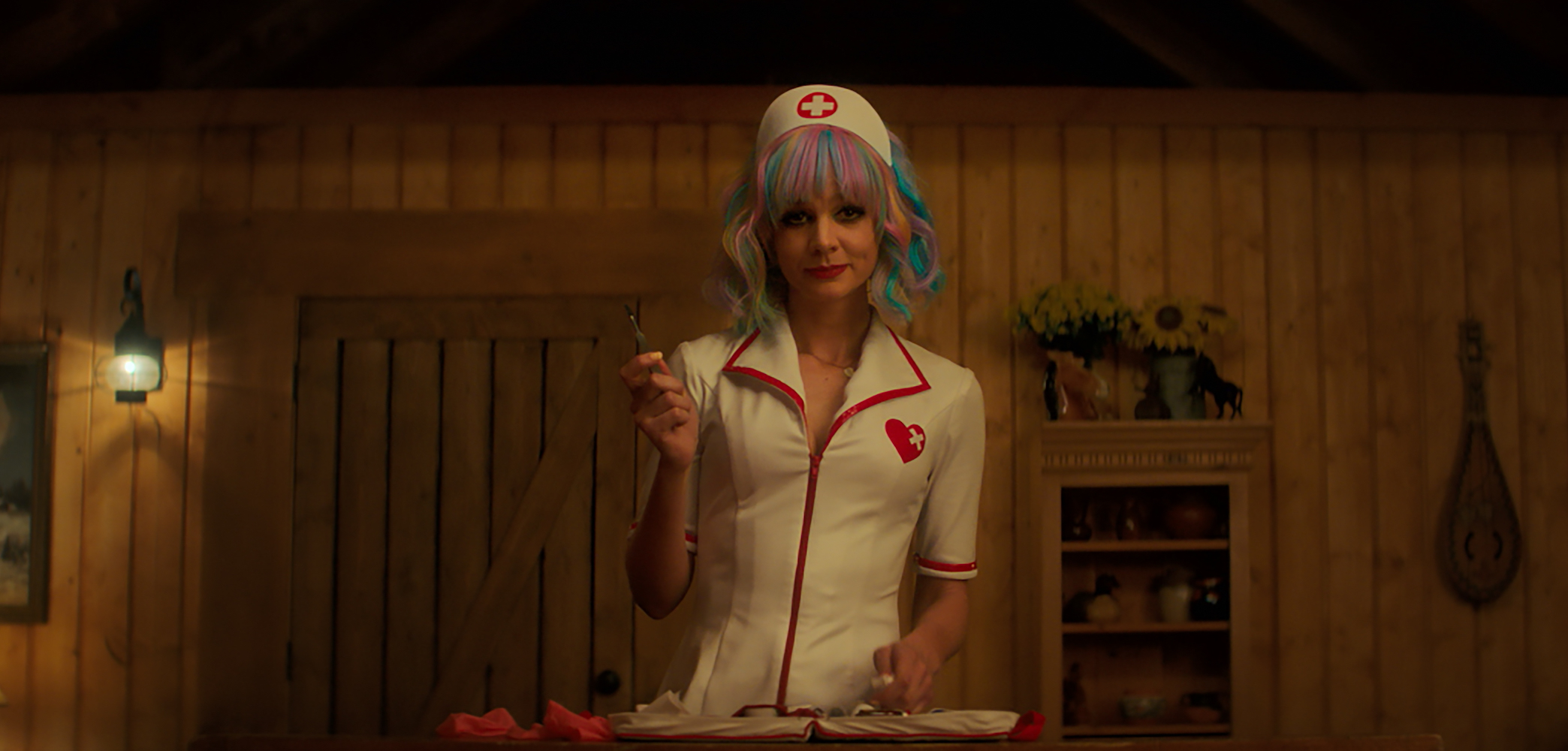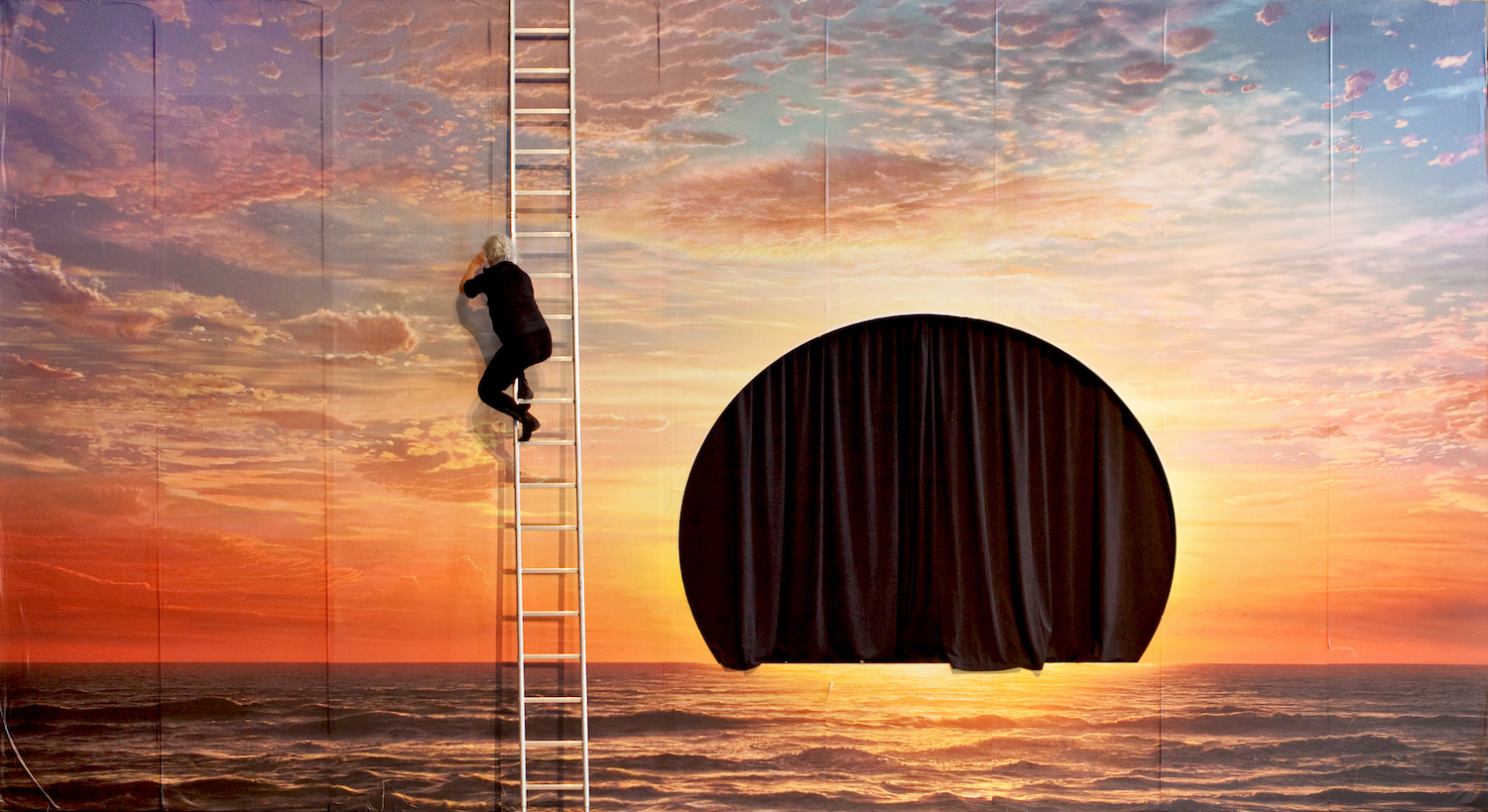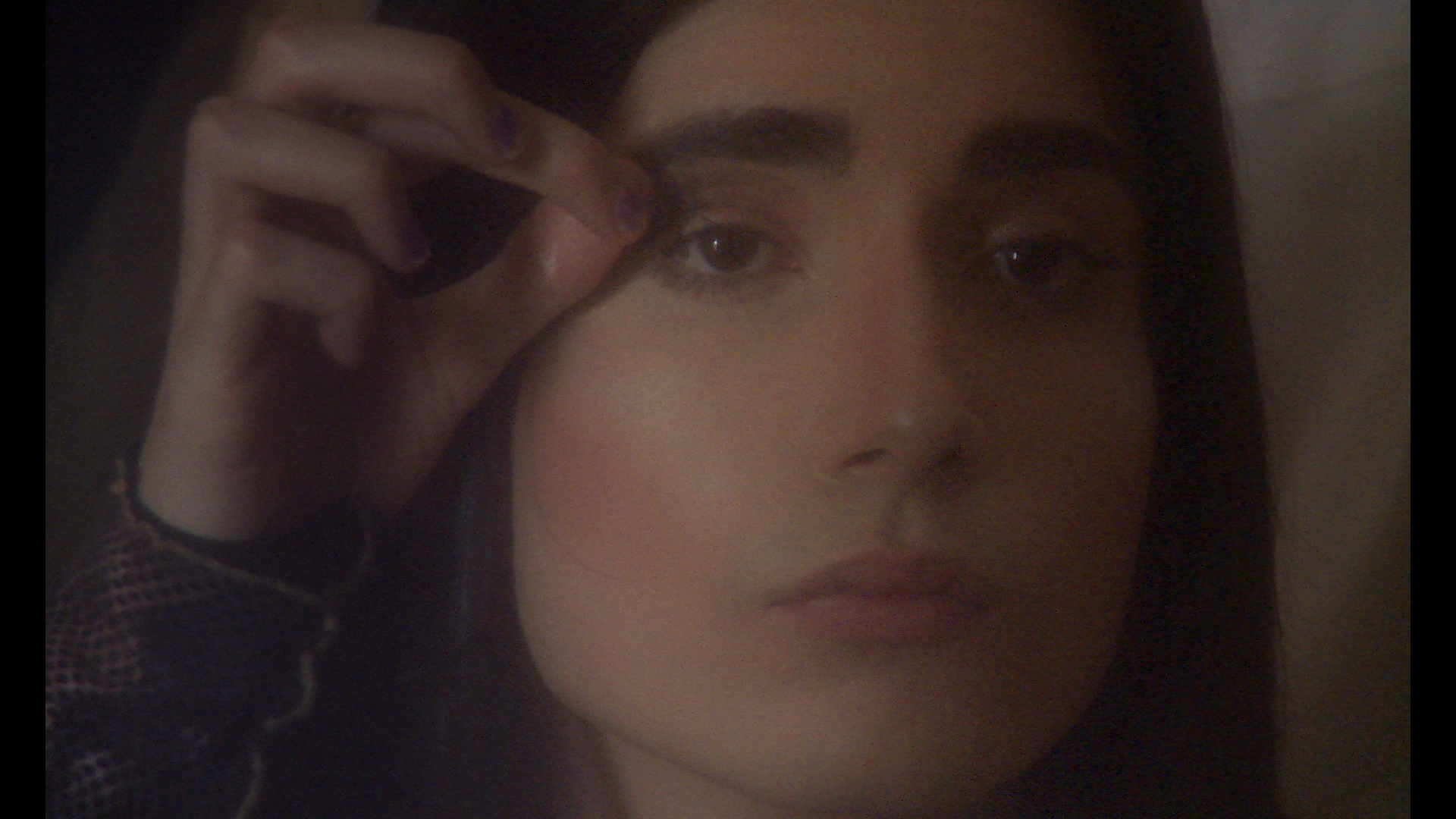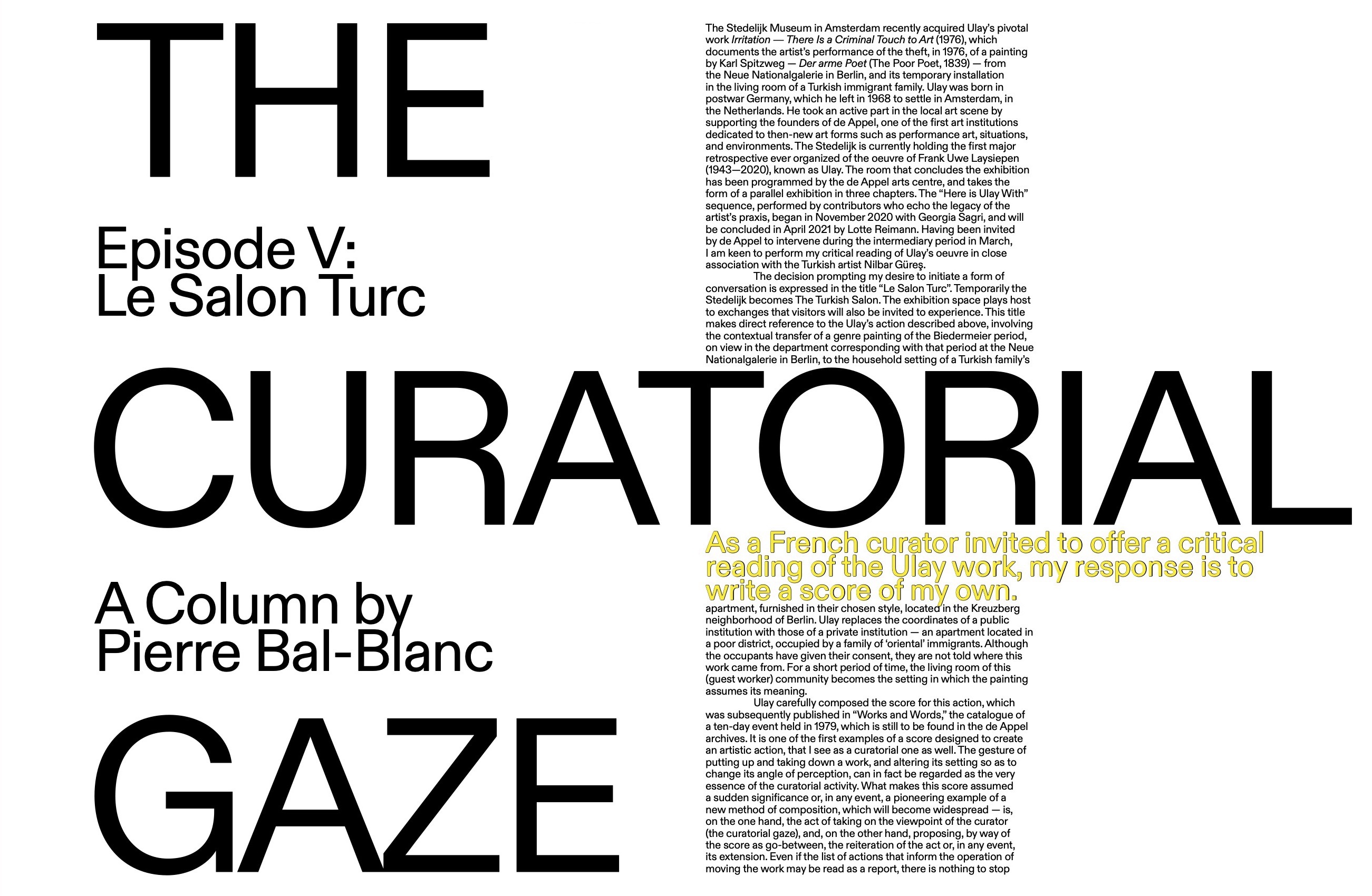The correlation between one’s home situation and one’s life has been a tireless truism of this past year — and always. The social and familial networks that suffocate or leave us lonely are fused with the physical nature of where one lays one’s head. Lydia Ourahmane’s exhibition “Barzakh” at Kunsthalle Basel tackles issues of home and its many pathways, exposing the interconnectedness of the personal and global, illusions of privacy, and the ghosts of history etched into the mundane objects that crowd our intimate lives.
The central installation, 21 Boulevard Mustapha Benboulaid (2021), consists of the furnishings (from desks to blankets to partially full ashtrays) from Ourahmane’s apartment in Algiers. The address, her first on returning to Algeria after leaving as a child, was previously inhabited by a woman, now recently deceased, who had returned from Germany with the furniture as a divorce settlement. It was the only apartment available to a single woman. Altogether, the work immediately converses with mirrored issues of identity, nationhood, and cultural difference in concept and object through the two women. One discovers Ourahmane’s life has become foggily woven with that of this previous owner; photos on the refrigerator are clearly of the artist and friends, others perhaps not. Beckett and Poe reside near Mark Fisher. These trappings of home are riddle and portrait, the artist and the phantom she lives with. Born from the personal, it questions how we all relate to and absorb the identities and cultures of others, their things and their stories.
This conceptual gesture inhabits a remarkably sculptural installation. A soap tray hangs, lonesome, near the entryway, a few meters from its usually more neighborly bathroom cabinet. A nightlight in the farthest room is particularly poetically situated. Ourahmane’s earlier Untitled (cassette pulled from car crash) (2015) is seminal to the mid-2010s readymade renaissance. The charred titular object confronts the viewer as if still within the now wrecked automobile. Here, invisible rooms have been abstractedly maintained. As with the tape, the viewer becomes missing structure: both welcomed and intruding voyeur.
That feeling is amplified by the inclusion of five organic glass table sculptures, all titled with a Swiss telephone number and revealing themselves to be electronically bugged “reactive sound-installations.” These works listen, and by calling, say +41 77 207 89 09, anyone may too. Whereas Park McArthur’s recent exhibition at Kunsthalle Bern made off-site accessibility its total concern, Ourahmane’s, in Basel, triggers haunting discussions of privacy, from the hallowed ground of the abode to that of the museum. The exhibition hall becomes a stage for the artist and viewer, leaving both very exposed. The furniture may be used by all, but, as with Facebook and Gmail, that gift comes at the cost of privacy.
This exposure is alluded to alternatively with 21 Boulevard Mustapha Benboulaid (entrance) (1901–2021), the extracted door (frame and all — and, once again, a master class in found form and display) from the same apartment. Actually multiple doors, steel plates, and countless locks, it is a portrait of a place and an additive history of civil war and desired security. It suggests that the private spaces we find and sculpt with our personal objects are both safe havens and possible prisons. Home is not only a place of safety; retreating there can be like Sidney Prescott escaping up the stairs in Scream. Here, though, there’s a chance someone will be listening: the outside world, the specter of the past, or, perhaps by summer, other viewers, currently physically absent, like the artist and her domestic passenger.

